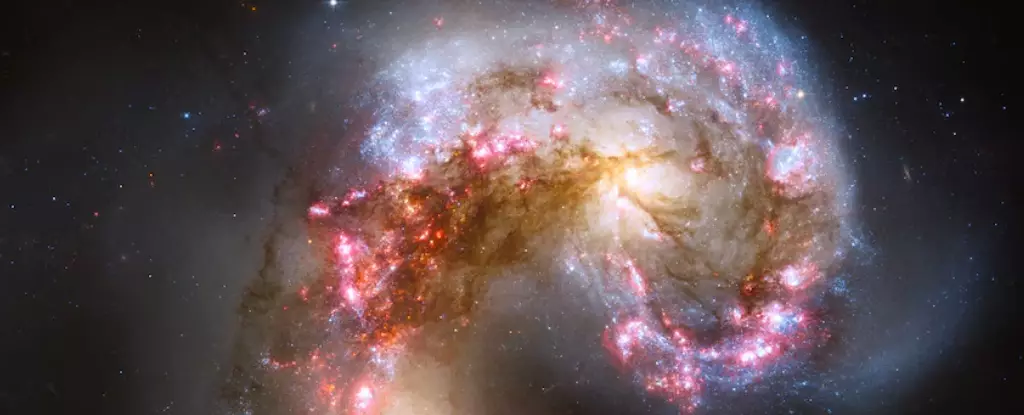The cosmos is vast and filled with enigmas, one of which is the formation of elliptical galaxies. Despite the advancements in astrophysics, the evolution of these large, star-poor structures has remained a significant puzzle. Recent collaborative research has begun to illuminate this mystery by providing noteworthy observational evidence, which adds a new layer to our comprehension of the universe.
Understanding Galaxies: The Basic Framework
Galaxies, the fundamental building blocks of the universe, are generally categorized into two primary types: spiral and elliptical. Spiral galaxies, exemplified by our Milky Way, are characterized by their flat, rotating discs filled with gas, dust, and active star formation. In contrast, elliptical galaxies appear more rounded, encompassing a solid sphere of stars, and exhibit little to no ongoing star formation activity. Most of their stellar populations formed over 10 billion years ago. The challenge for astronomers has been to understand how galaxies transitioned from the disc shapes traditionally associated with star formation to the rounded structures we observe today.
Traditionally, it was thought that the formative processes of elliptical galaxies could be explained through cosmological models that detail the universe’s evolution from the Big Bang. However, existing theories struggled to clarify why and how the galaxy shapes evolved from rotating discs to the compact forms we associate with elliptical galaxies.
Recent research has turned the tide, revealing that elliptical galaxies did not simply evolve from their spiral counterparts. By employing advanced observational techniques with the Atacama Large Millimeter/submillimeter Array (ALMA), researchers have analyzed the dust distribution in over 100 ancient galaxies, effectively outlining the birthplaces of what would become elliptical galaxies. Dust, indicative of gas—the raw material needed for star formation—served as an essential component in deciphering the regions of active star formation.
Remarkably, findings indicated that these ancient galaxies were not shaped like flat discs; instead, they exhibited compact, three-dimensional structures. This revelation suggests that many early star-forming galaxies closely resembled modern elliptical galaxies, challenging previously held beliefs about galaxy evolution.
Further examination of the data has provided insights into the physical processes at play during these formative epochs. Computer simulations of cosmological scenarios indicate that the interaction of cold gas streams with surrounding galactic bodies and the occurrence of mergers played pivotal roles in funneling gas and dust toward the centers of star-forming galaxies. These dynamics are fundamental in the rapid assembly of elliptical structures.
The research posits that such compact star-forming regions were commonplace in the early universe, marking a crucial departure from the notion that elliptical galaxies solely derived from disc transformations. The early stellar explosions and subsequent gas accumulation accelerated galaxy formation, paving the way for a more nuanced understanding of how these celestial giants came to be.
The Role of Collaborative Research and Open Data
A key component behind this groundbreaking study was the utilization of extensive, archival ALMA data gathered over years. This collaborative approach exemplifies the benefits of open-source data in the scientific community. When researchers share their resources and findings, they enhance opportunities for discovery, driving science forward more rapidly than isolated efforts could achieve.
Additionally, the implications of this research extend beyond mere theoretical considerations. Future observational projects, like those involving the James Webb Space Telescope (JWST) and the Euclid space telescope, aim to provide even deeper insights into the formation and structure of early galaxies. Collectively, these advancements can refine our understanding of how we have arrived at the diverse array of galaxies we observe today.
The exploration of how elliptical galaxies form has reached an exciting juncture. This recent research has illuminated key aspects of elliptical galaxy formation that were previously misunderstood. As we continue to investigate the intricate dance of galaxies and the forces that shape their evolution, we move closer to answering fundamental questions about the universe. The collaborative efforts of the scientific community, propelled by advances in observational technology and data sharing, will undoubtedly uncover further insights into the mysteries of cosmic structures in the years to come. As we expand our knowledge, we realize that the universe has more secrets waiting to be uncovered, beckoning us to continue our exploration.

